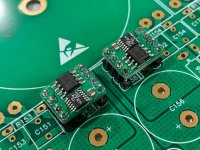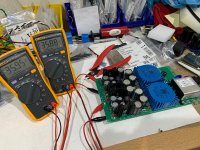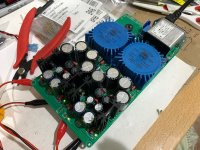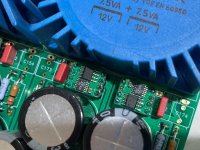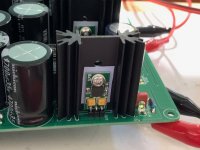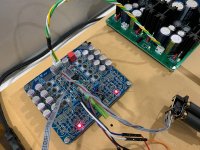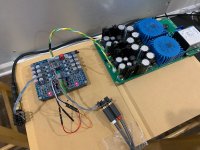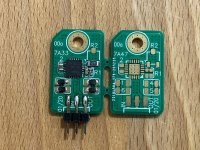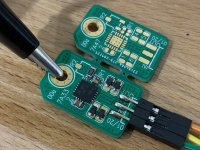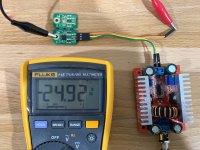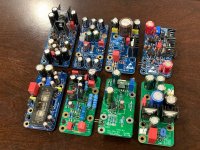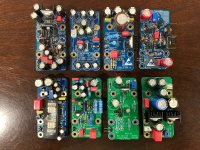I should really finish mine
Finish what? Your M2X? If so, I agree. It sounds nice with the Yarra / Melbourne. I built the M2 via Teabag boards, not the M2X. While all the amps I've built sound very good, the M2 gets the most use because it can drive so many different speakers while always sounding good. The other amps can sound stunning into the right speaker, but the M2 can stand up to loads where others fall flat.
Hi X,
Assuming Nelson gives his approval on this and looking at the SMD components on the rear of the pcb, are you considering offering 2 versions. The bare pcb itself with members having to solder all the SMD devices and an option to buy the pcb fully built and tested (like the SSR board).
Regards,
Gary..
Assuming Nelson gives his approval on this and looking at the SMD components on the rear of the pcb, are you considering offering 2 versions. The bare pcb itself with members having to solder all the SMD devices and an option to buy the pcb fully built and tested (like the SSR board).
Regards,
Gary..
Yarra PSU with LDO regulators and LT4320 mini-bridges
I finally found some time to assemble the verification build of the alternative PSU for Yarra that has 78xx/79xx TO220 output regulators instead of a cap multiplier. This PSU also has optional LT4320 active mini bridges that drop in where the standard qnty 4x 1N400X diodes would normally go. Here is the build so far - it worked the first time and with Vunce's help on the verification build, he pointed out a couple of layout issues (Eagle bugs) that left some pads un-connected on the diode bridges. I had to manually bridge these pads to the main pour using a dab of solder. But apart from that, the new PSU worked the first time.
I first built the cute little LT4320 (12 pin MSOP package) active bridges with some 12.5mOhm RDson 8A continuous double MOSFETs.
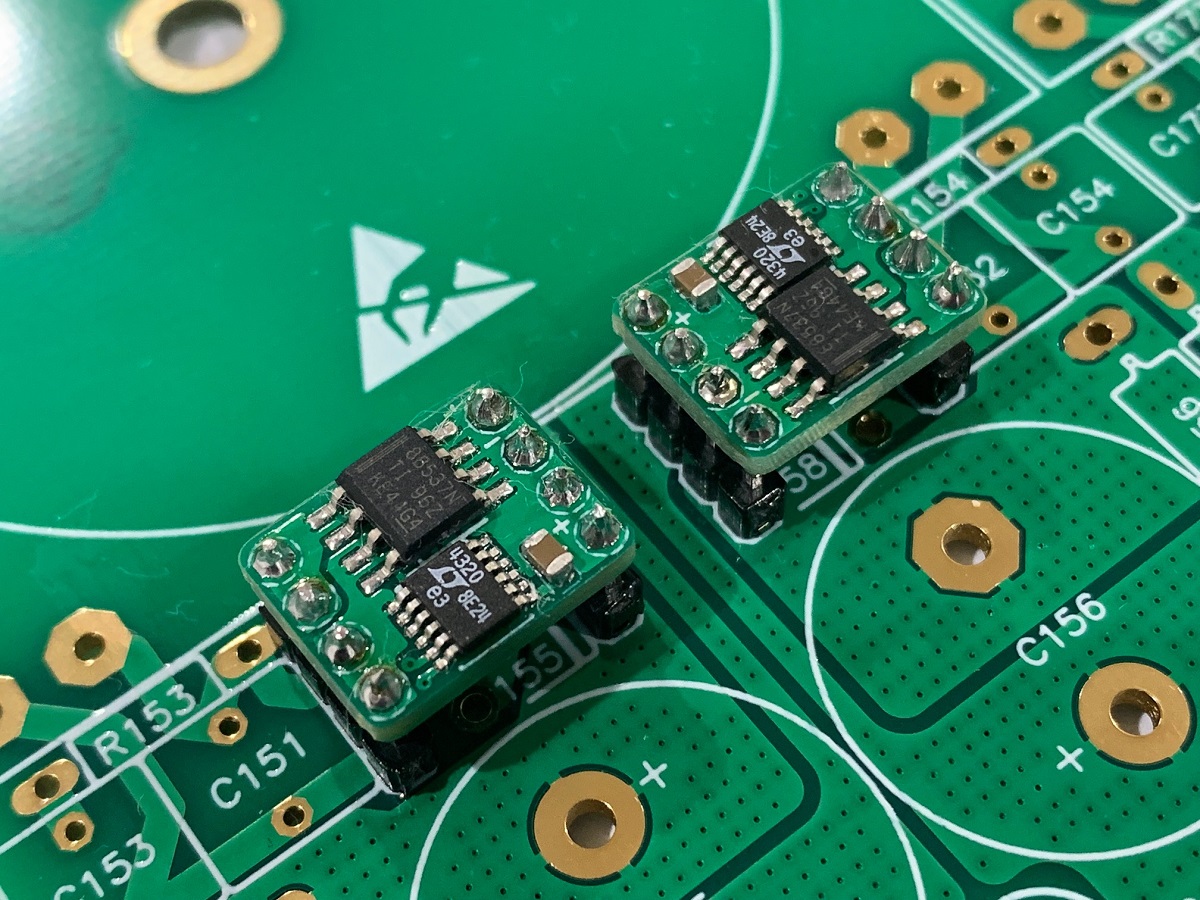
Here is the PSU assembled and undergoing testing with some 12v Talema's that I had on hand and these are able to get to +/-18v (20.5v no-load):
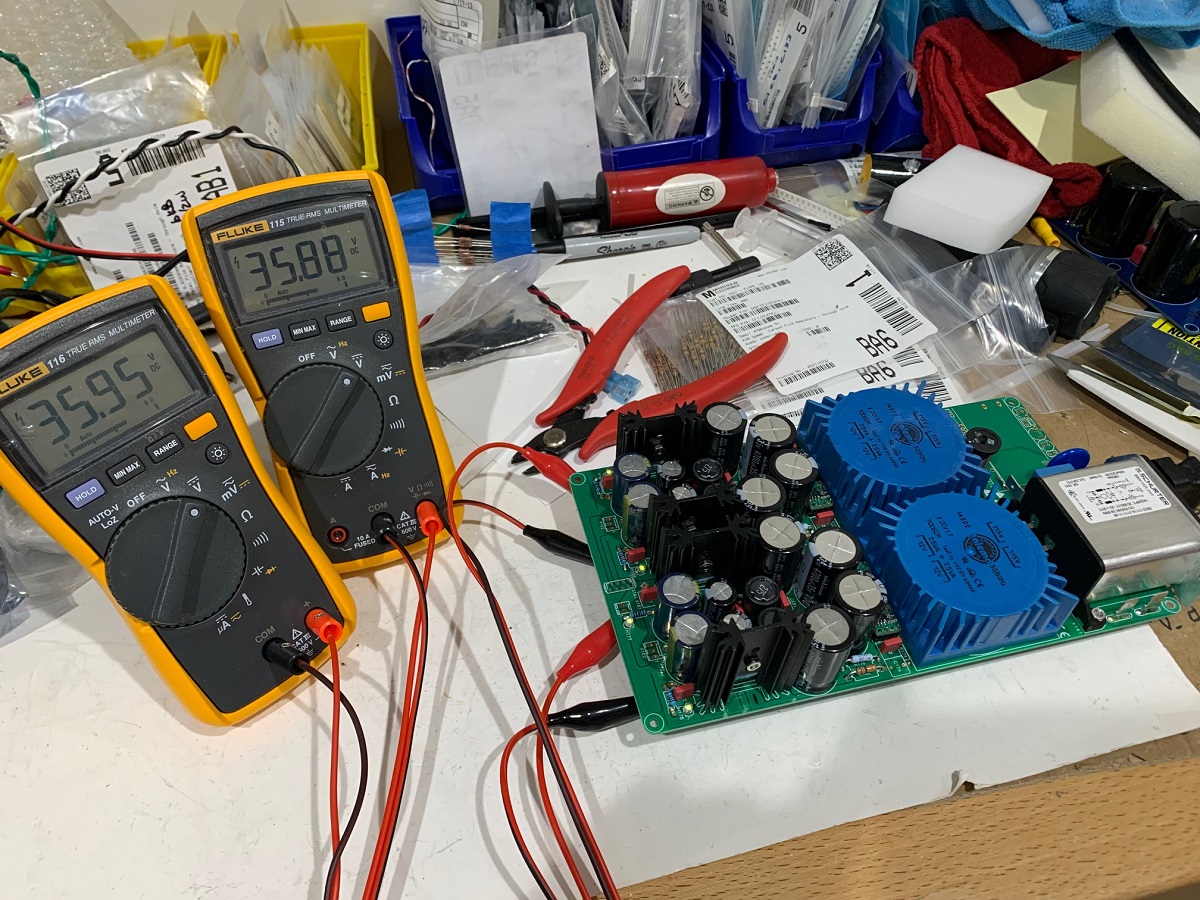
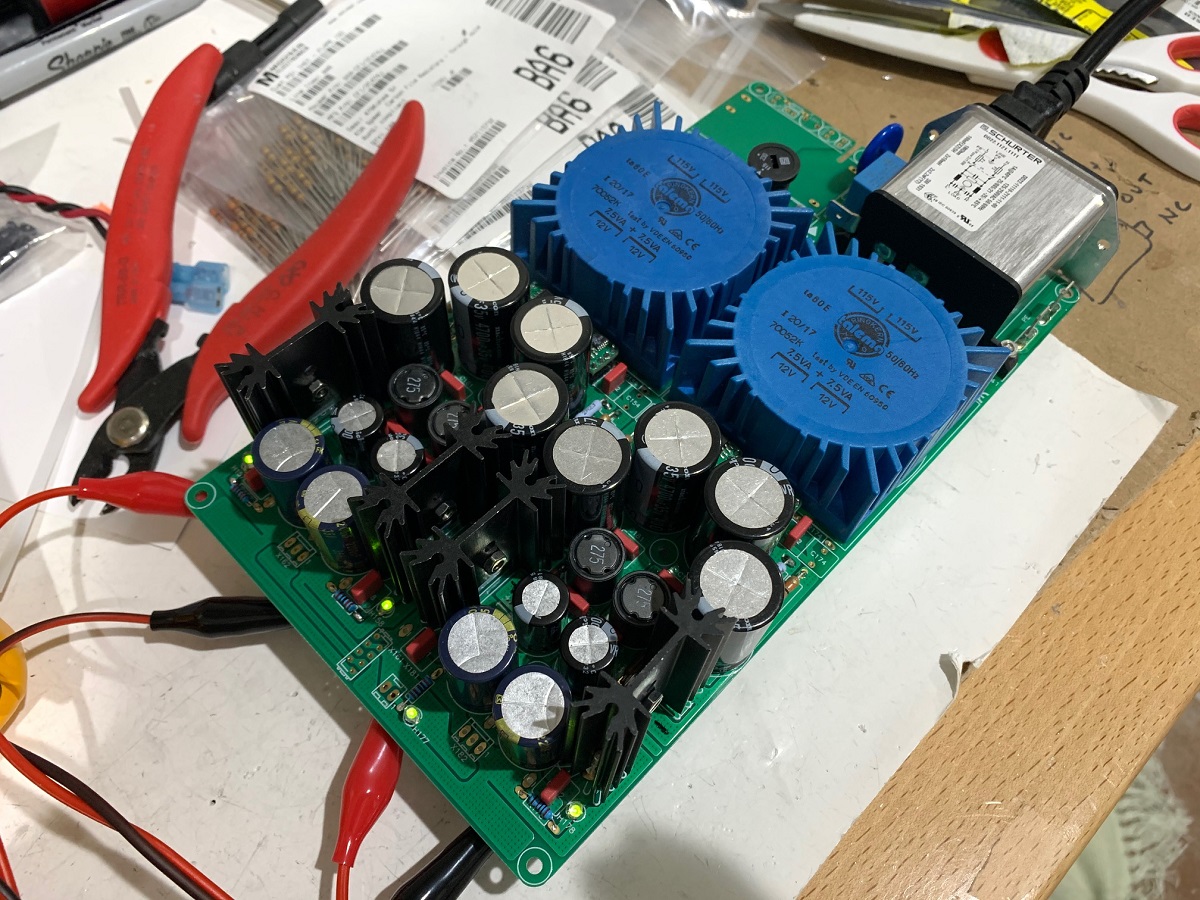
Here is a closeup of the mini bridges and the Talema's:
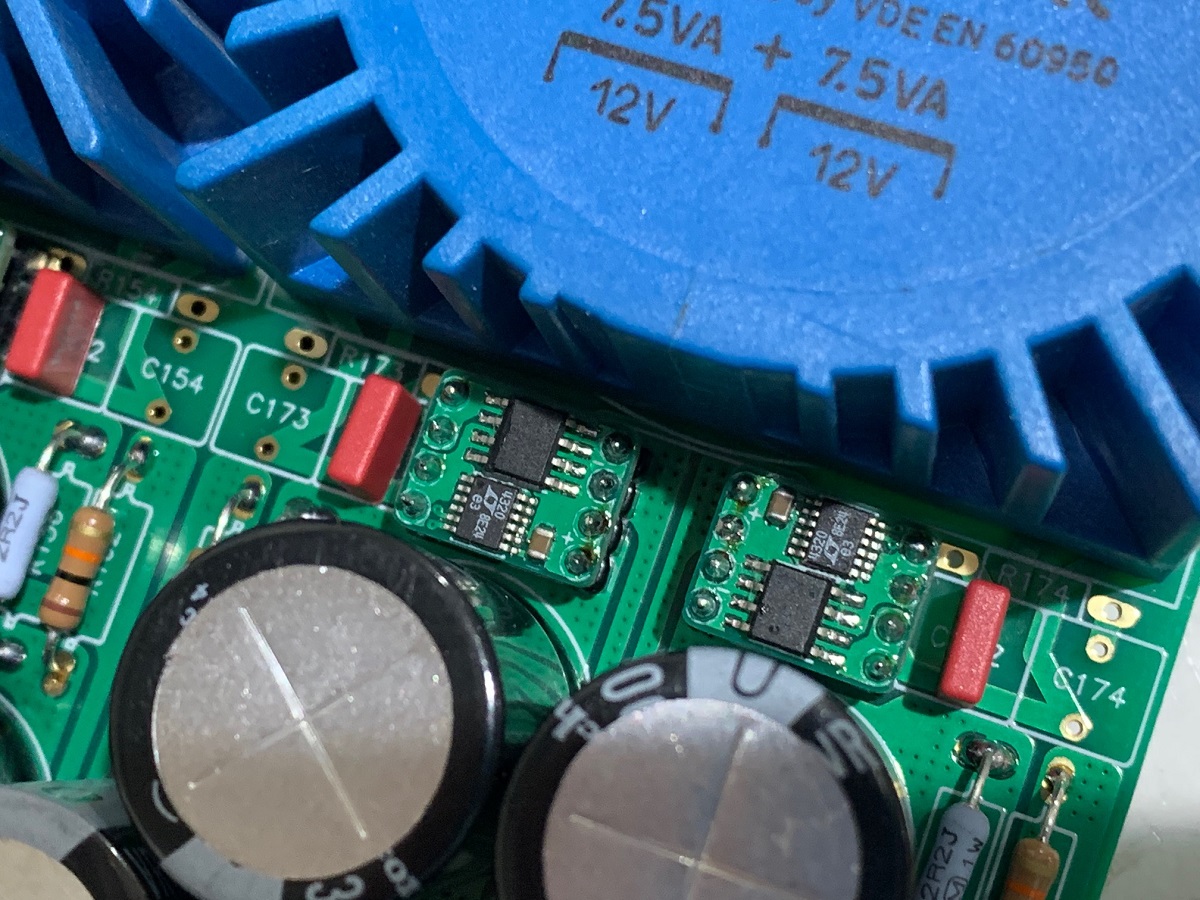
Here is a closeup of the pre-made TPS7Axxx LDO regulators in TO220 format:
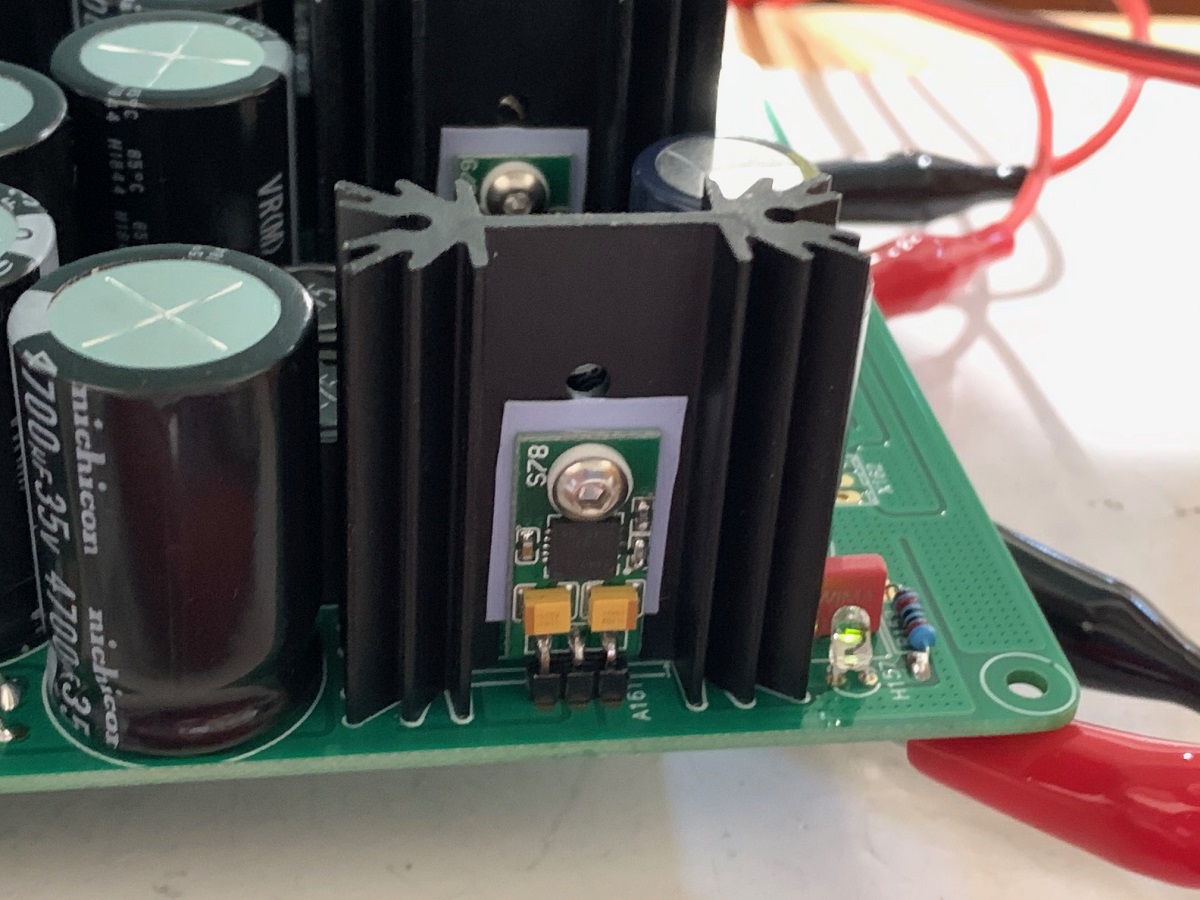
JPS64 also made a layout for his version of these boards. I still need to test this supply under a resitive load to draw the typical 150mA current that a headphone amp would draw. For most preamps, 70mA would probably be sufficient.
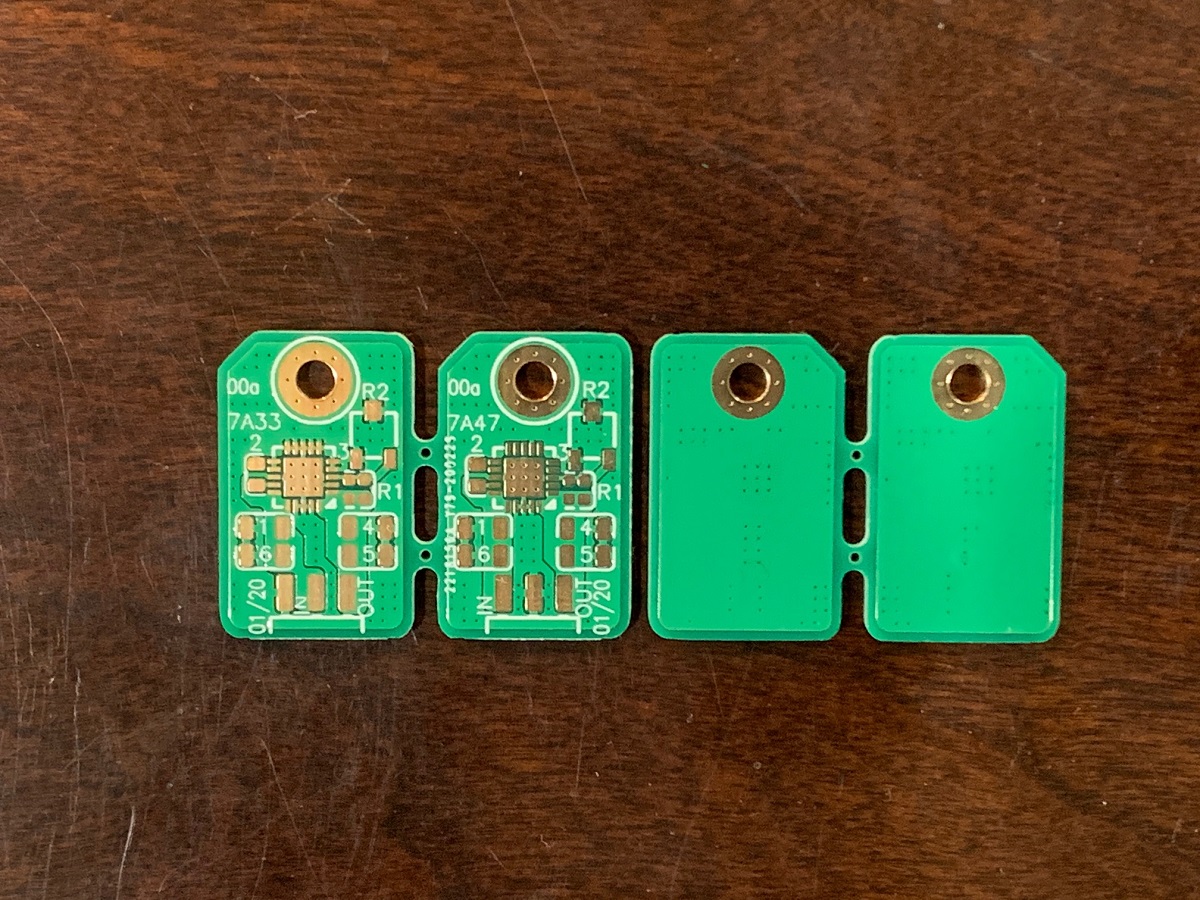
I finally found some time to assemble the verification build of the alternative PSU for Yarra that has 78xx/79xx TO220 output regulators instead of a cap multiplier. This PSU also has optional LT4320 active mini bridges that drop in where the standard qnty 4x 1N400X diodes would normally go. Here is the build so far - it worked the first time and with Vunce's help on the verification build, he pointed out a couple of layout issues (Eagle bugs) that left some pads un-connected on the diode bridges. I had to manually bridge these pads to the main pour using a dab of solder. But apart from that, the new PSU worked the first time.
I first built the cute little LT4320 (12 pin MSOP package) active bridges with some 12.5mOhm RDson 8A continuous double MOSFETs.
Here is the PSU assembled and undergoing testing with some 12v Talema's that I had on hand and these are able to get to +/-18v (20.5v no-load):
Here is a closeup of the mini bridges and the Talema's:
Here is a closeup of the pre-made TPS7Axxx LDO regulators in TO220 format:
JPS64 also made a layout for his version of these boards. I still need to test this supply under a resitive load to draw the typical 150mA current that a headphone amp would draw. For most preamps, 70mA would probably be sufficient.
Attachments
With the 12v Talema, I was only able to get up to 200mA before it started to lose regulation and sag. Ideally, the LDO's should be set for +/-15v and it can probably put out a lot more current. For +/-18v output, probably should have used a 15v trafo. With the O-scope I could not see any added or measurable noise on top of the noise RF pickup that I am getting in my lab. Testing with the OPA1622 Muscle Amp and it sounds great as a preamp - absolutely black background.
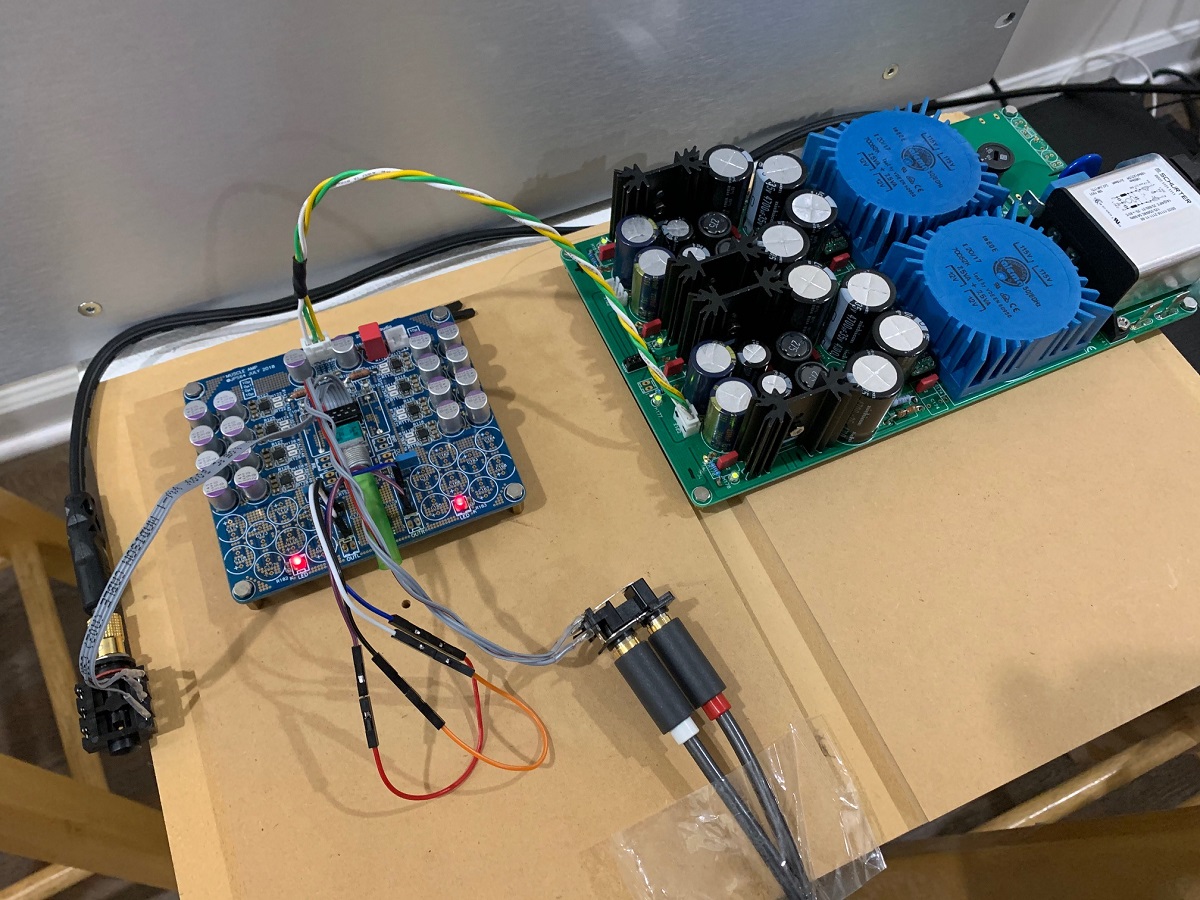
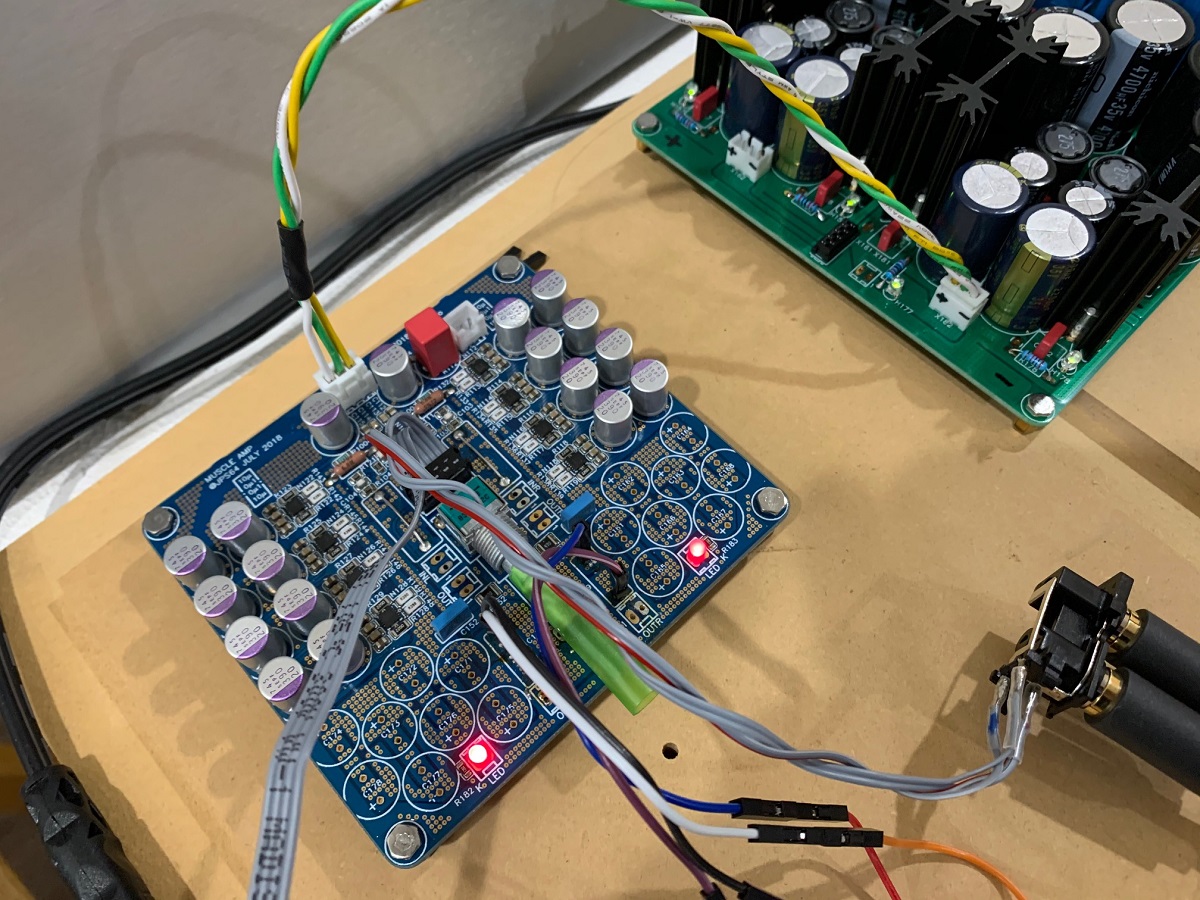
Attachments
I built up one of the TPS7A LDO regulator boards to see how hard it was to make. Easy actually, just use very little paste and use a hot plate on the bottom and hot air on the top. I used 10uF 25v 0805 (should be 1206) tantalum caps for C1/4/5/6, 1uF 50v 0805 for C2, 0.1uF 50v 0603 for C3. I desired a 24v output so used the data sheets to arrive at the closest resistors I have on hand, which turned out to be 1M 0603 for R1 and 51k 1206 for R2. With this I got -24.92v no load and -24.88v under 100mA load wit -27v input. The output was rock steady and invariant to input voltage. So if you want precise voltages, you will need to get the recommended 0.1% tolerance resistors as suggested in the data sheet.
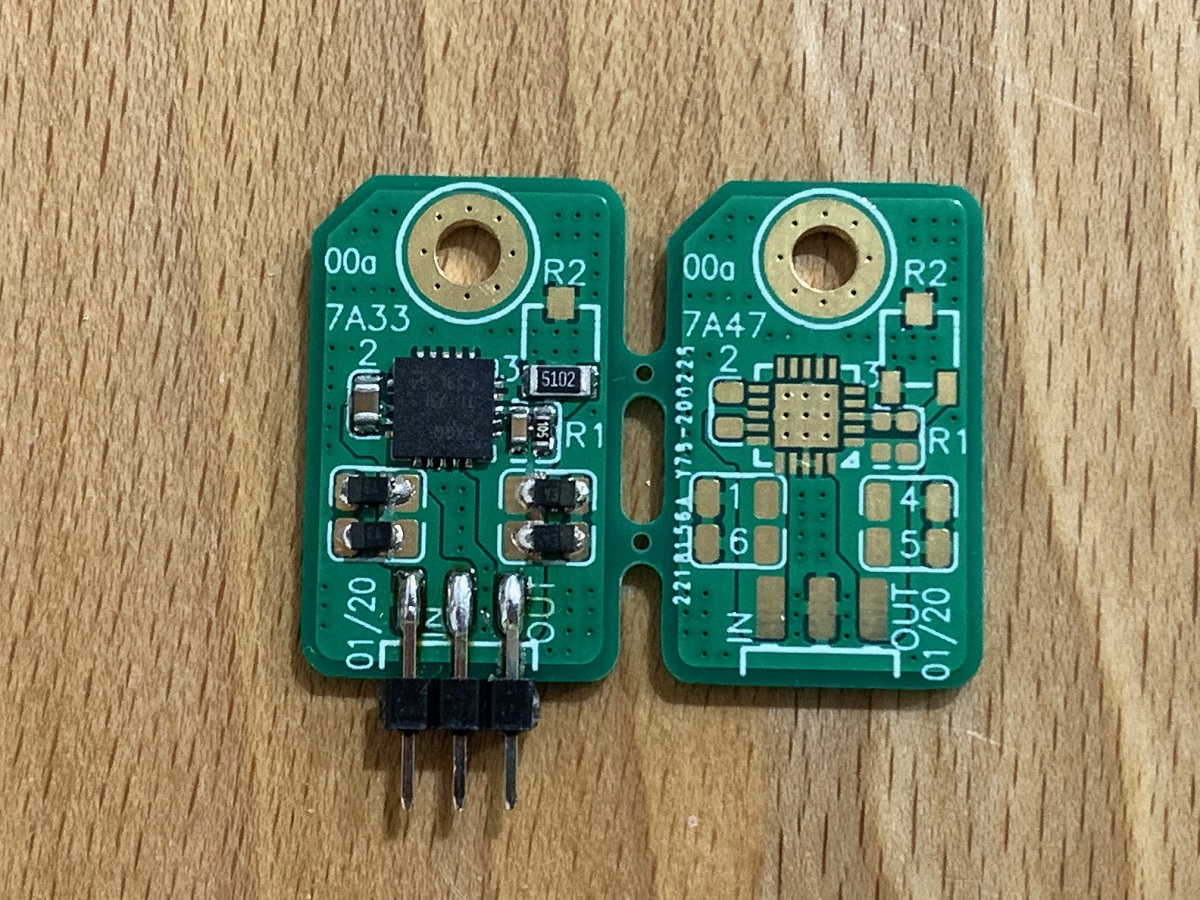
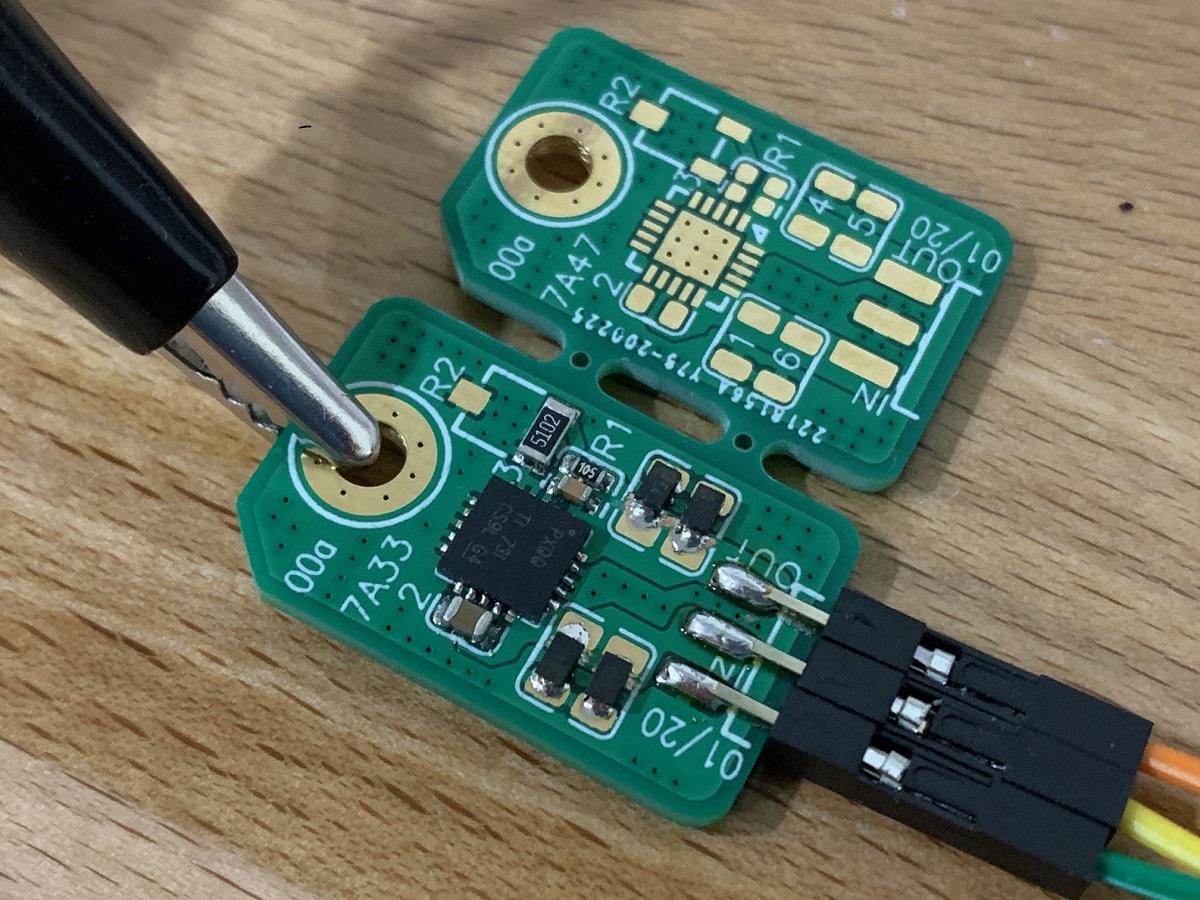
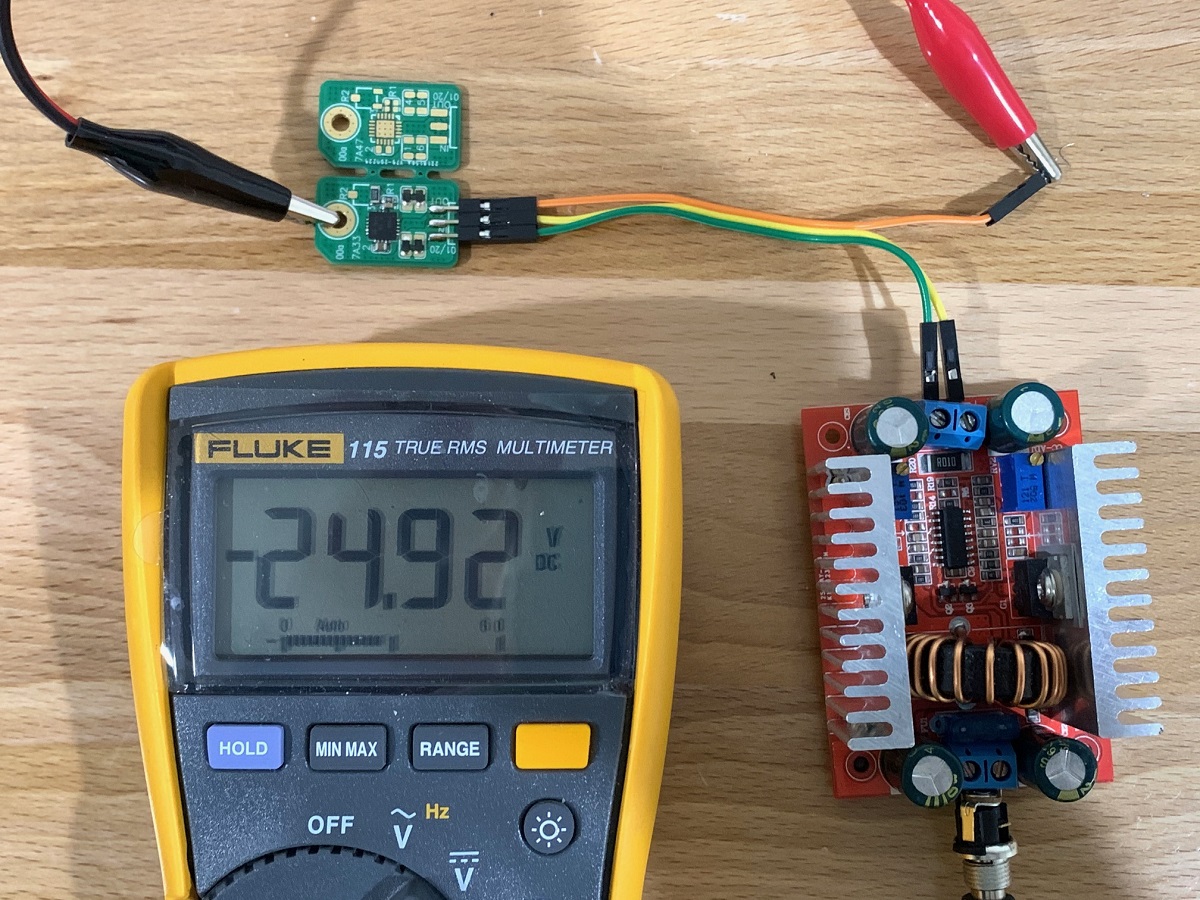
Attachments
Last edited:
The Pass ACP+ Headphone Amp/Preamp has been successfully tested. It sounds great! Very nice dynamic sound with deep bass and super soundstage. It is a zero global feedback amp so the imaging and soundstage is superb. It uses an optoisolated bias control in SE Class A and dual P-junction JFETs on the input - almost like a miniature Aleph J/M2X.
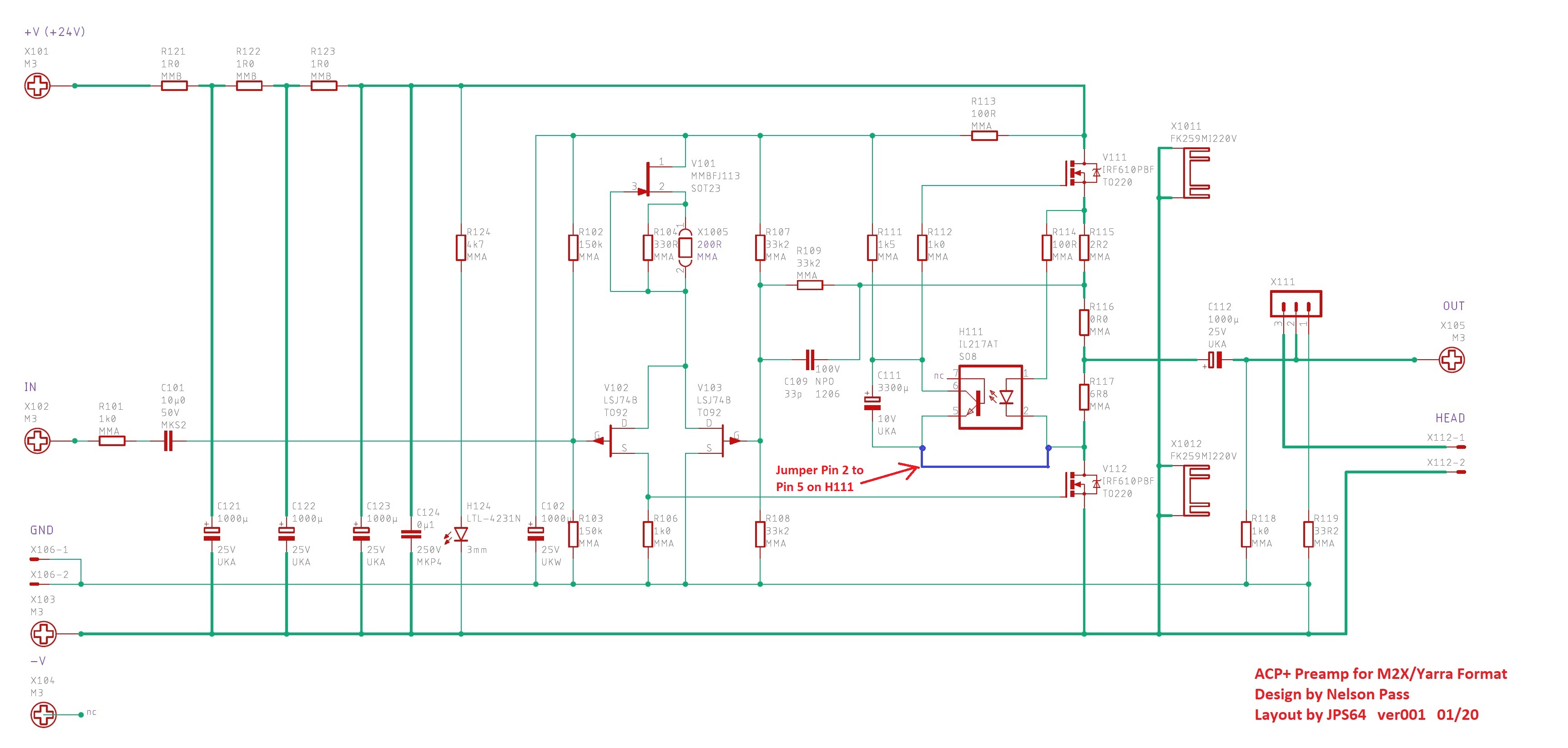
Amp Camp Pre+Headphone Amp - ACP+
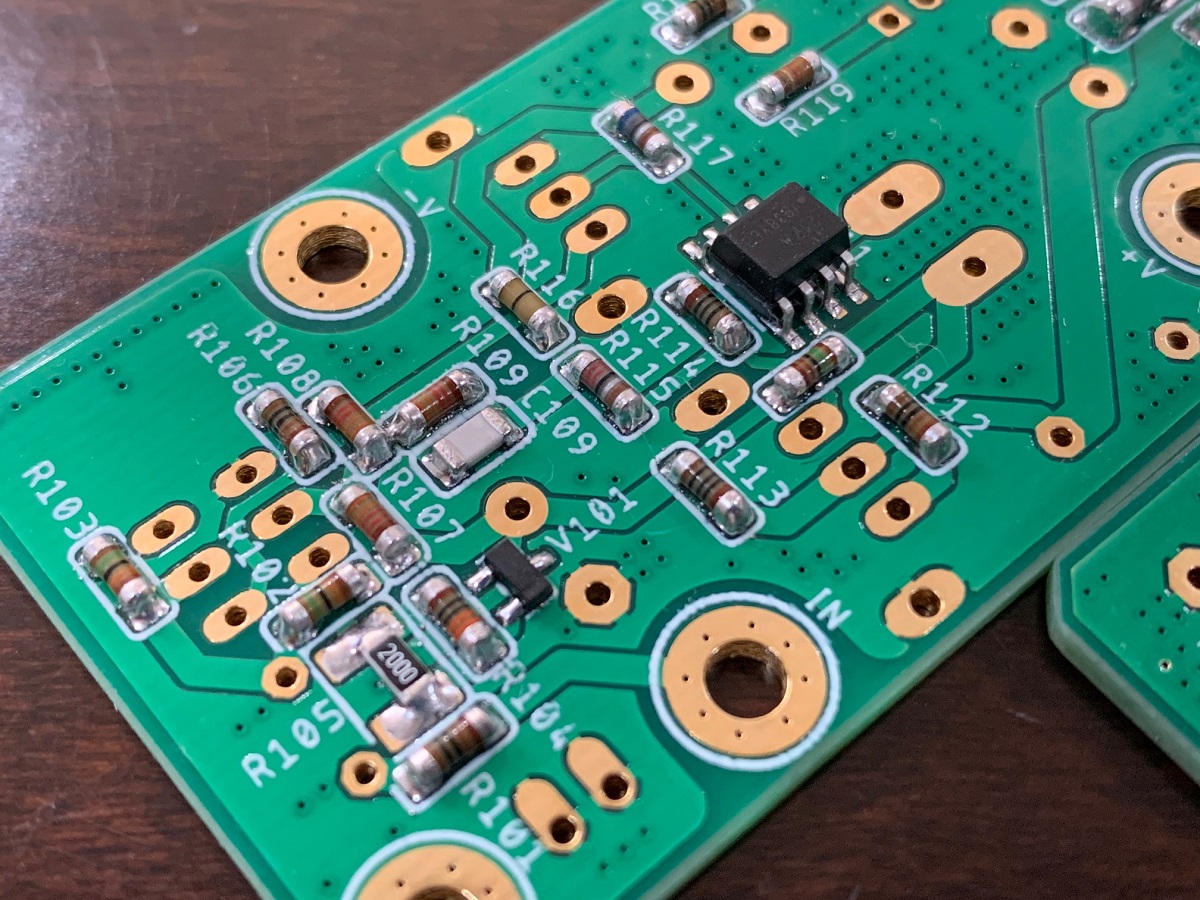
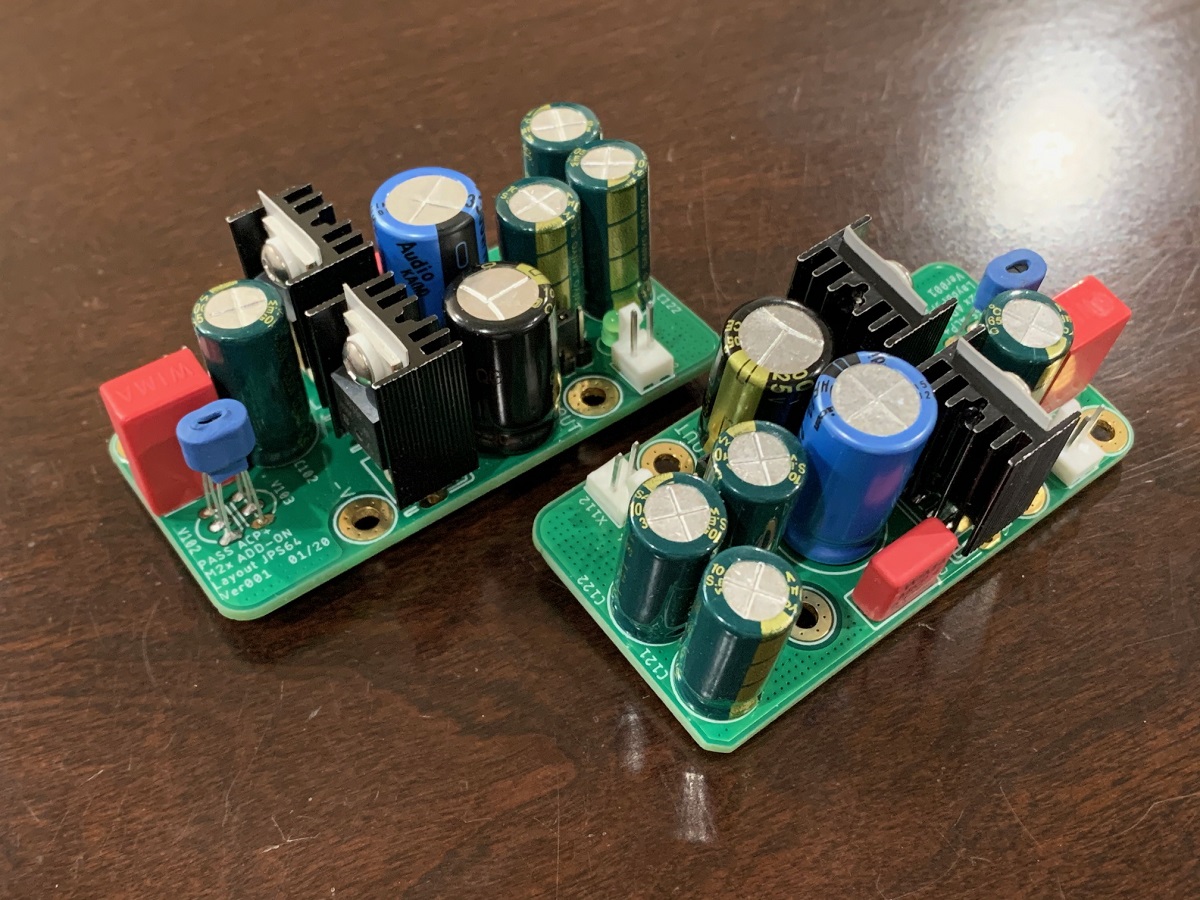
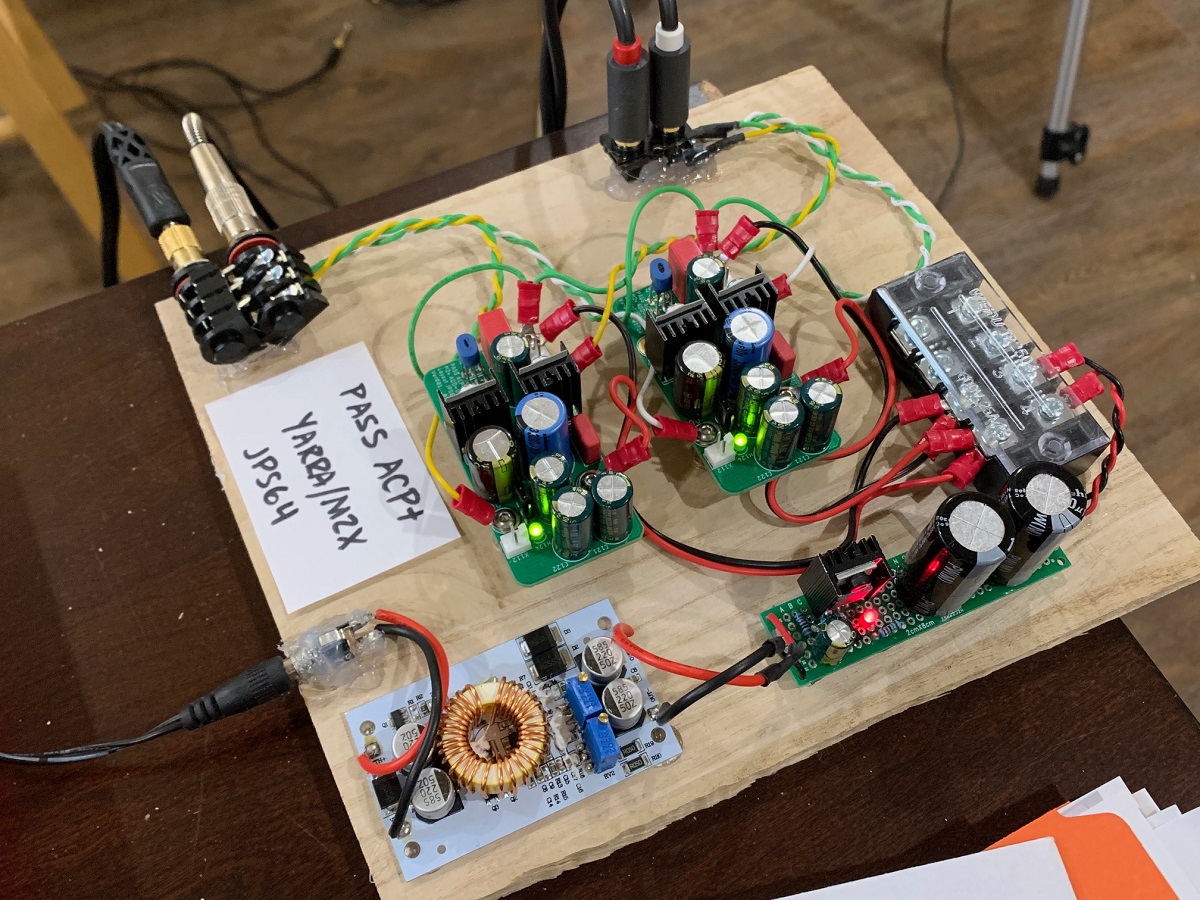
Amp Camp Pre+Headphone Amp - ACP+
The Yarra family of preamp core daughterboard modules has been growing steadily. I can't believe that there are currently 8 different modules.
Back row left to right: Melbourne TH, Melbourne SMT, DCA/PCA, WBA18
Front row left to right: Korg 6P1 NuTube, Hakuin, Pass H2, Pass ACP+
The Yarra format has been a great platform to be able to try all of these different preamp cores.
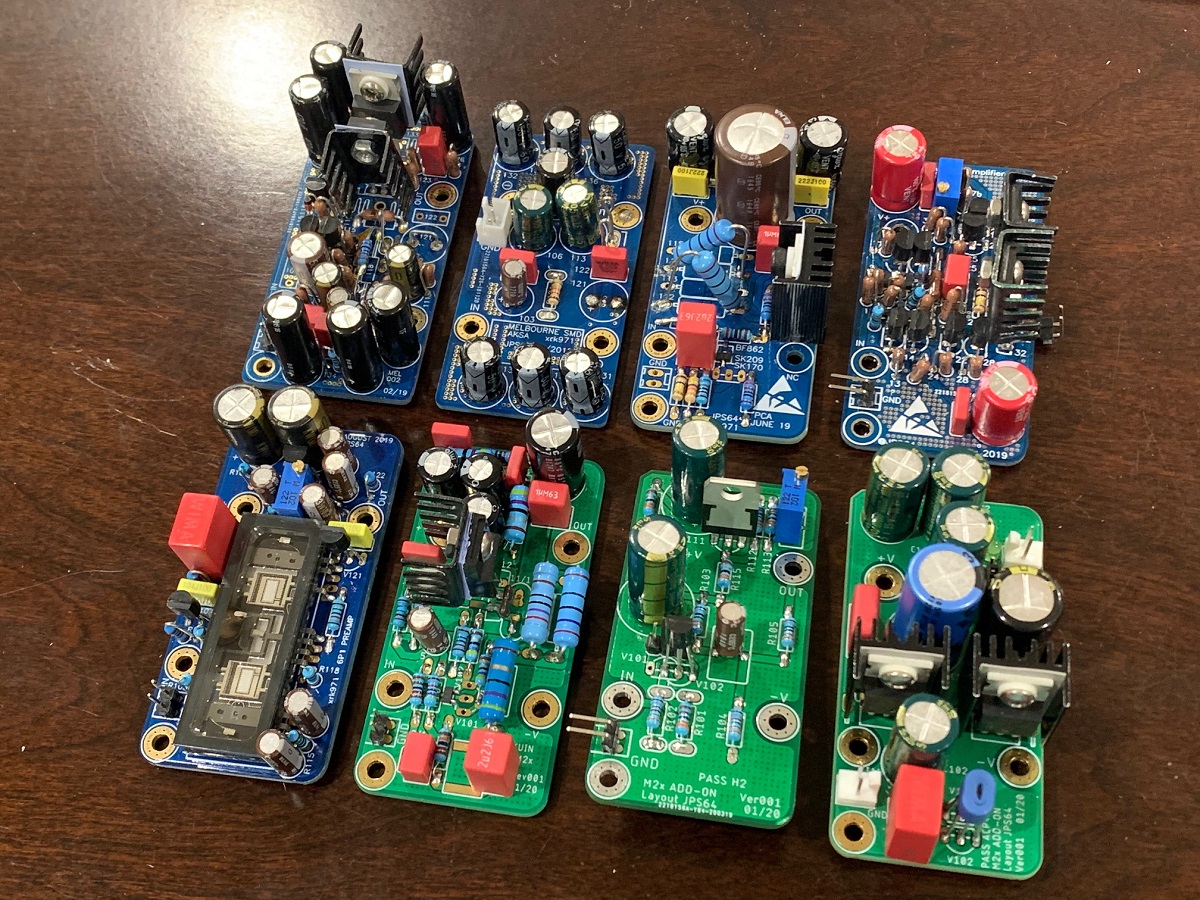
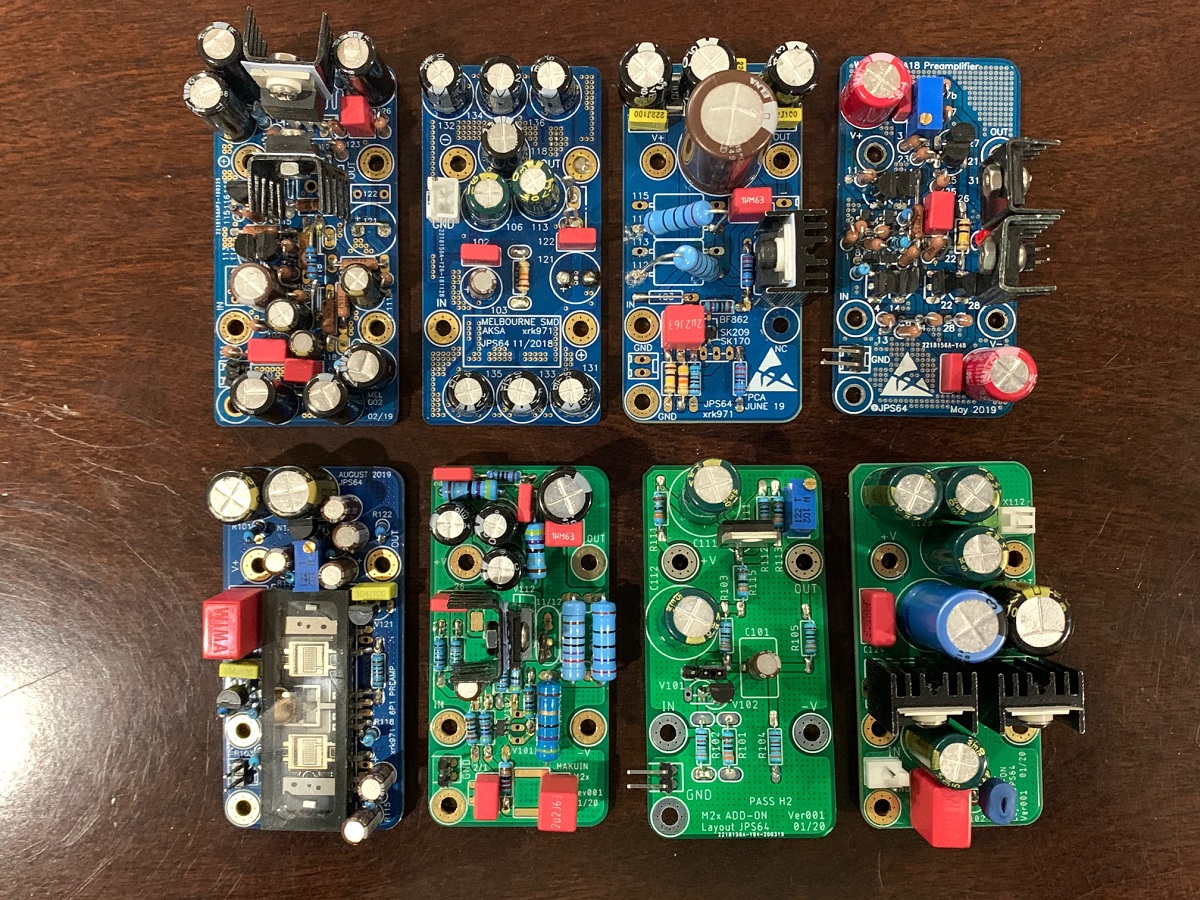
Back row left to right: Melbourne TH, Melbourne SMT, DCA/PCA, WBA18
Front row left to right: Korg 6P1 NuTube, Hakuin, Pass H2, Pass ACP+
The Yarra format has been a great platform to be able to try all of these different preamp cores.
Attachments
Very impressive lineup X, my next project is to get some of these built with the pcb's you have sent out, thanks.
Can I ask if you have other designs in the pipeline? TH rather than SMT is my preference.
Can I ask if you have other designs in the pipeline? TH rather than SMT is my preference.
Hi Gary,
This is all for now, but JPS64 is a very prolific designer, so the designs keep coming. The only reason the ACP+ used SMT is because that was the only way it would fit in a small daughterboard like this. We do try to keep the designs TH. There was the Melbourne SMT but no interest shown by anyone in building that. Mine is the only example as far as I know. If there is a preamp topology you are itching to try - let us know.
This is all for now, but JPS64 is a very prolific designer, so the designs keep coming. The only reason the ACP+ used SMT is because that was the only way it would fit in a small daughterboard like this. We do try to keep the designs TH. There was the Melbourne SMT but no interest shown by anyone in building that. Mine is the only example as far as I know. If there is a preamp topology you are itching to try - let us know.
I have an extra Yarra power supply board built up and it seems to be the right voltage for a Pearl II phono stage (26 to 35 volts at 100 ma). The pearl has its own regulators on the boards. I was thinking of using the Yarra PS board for the Pearl II. The pearl article says the positive rail will be sourcing more current than the negative rail. Is that a problem? Is there any reason the Yarra PS board should not be used for a pearl II?
Thanks
Thanks
There is no issue with one rail using more current than the other, as long as within the range of the power supply. Each rail is provided by an indepedent trafo secondary and its own cap multiplier. 100mA is no problem for a Yarra PSU.
Great! Now for a followup question. Do you think because the Yarra PS uses those quiet Talema transformers, that it could exist in the same chassis as the Pearl boards without noise issues? I think the gain of the pearl is around 55 dB.
You have to test it - all transformers emit EMI hum through the air. Fortunately, it falls off as 1/R^3 so distance plays a big factor. Mu metal shielding helps. If you can put the 55dB gain phono amps in one corner and the PSU trafo in the other, it might work. Lay them out on a table and move around and see if you hear noise pickup. My guess is that it might be challenging.
Hi Folks,
I am getting some interest from people in making more Yarra main board sets with the original PSU (cap multiplier).
We will need a minimum of 10 boards to make this worthwhile as the boards are large and quite expensive to make.
Let’s start the list off with me needing two boards:
When we can get 8 more commitments I will start taking preorders.
I am getting some interest from people in making more Yarra main board sets with the original PSU (cap multiplier).
We will need a minimum of 10 boards to make this worthwhile as the boards are large and quite expensive to make.
Let’s start the list off with me needing two boards:
Name quantity Country
xrk971 2 USA
When we can get 8 more commitments I will start taking preorders.
Last edited:
I got this Yarra since GB1, and i have to say that it is a very versatile preamp, not only it has many different kind of daughtercards to choose from, it also have a very wide range of +/- voltages available by simply adjusting the presets on the psu board with appropriate trafos.
It has also become my bench tester for my other preamp too...

When i first power up my USSPA....
Please don't miss this GB2!
It has also become my bench tester for my other preamp too...

When i first power up my USSPA....
Please don't miss this GB2!
- Home
- Group Buys
- The YARRA Preamplifier/HPA for Melbourne DB Group Buy
